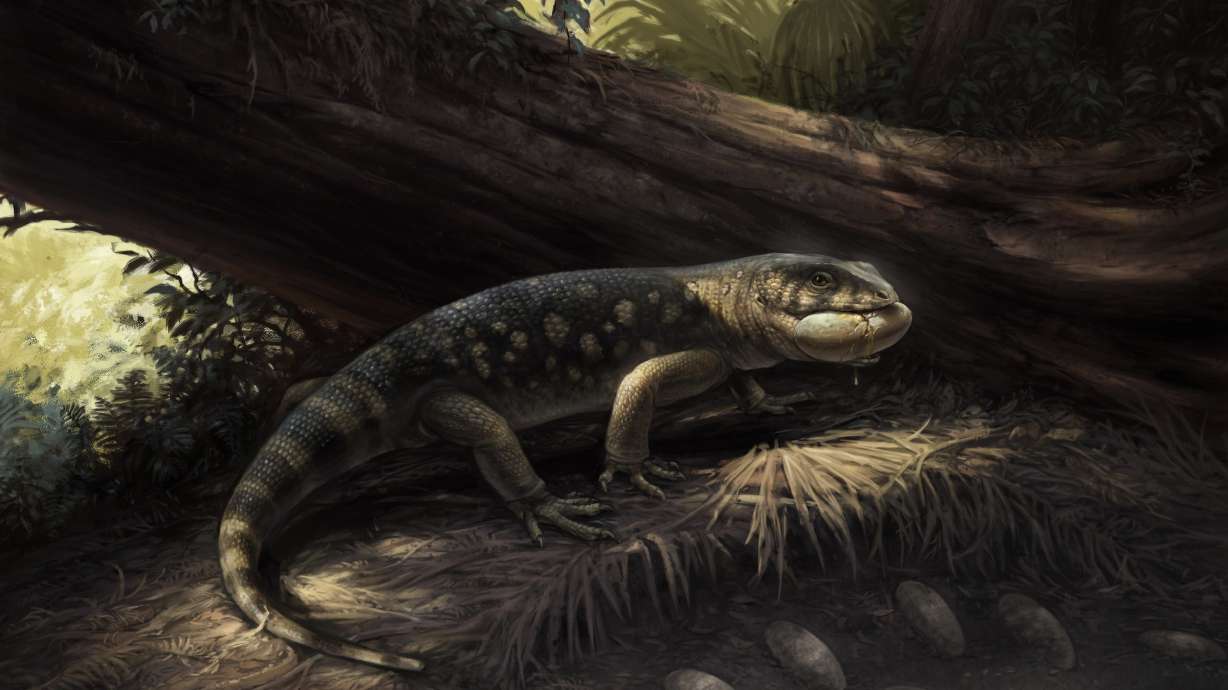
Previously unknown 76M-year-old, raccoon-sized dinosaur species discovered in Utah
How did your country report this? Share your view in the comments.
Diverging Reports Breakdown
Previously unknown 76M-year-old, raccoon-sized dinosaur species discovered in Utah
The fossil was found in Grand Staircase-Escalante National Monument in 2005. It was stored in a jar at the Natural History Museum of Utah in Salt Lake City. The fossil is now helping researchers gain a better understanding of the fossil’s importance. The team decided to name the species Bolg amondol, or “Bolg” for short, in a nod to the goblin prince from J.R. R. Tolkien’s “The Hobbit” The species would have been about the size of a raccoon, making it one of the smaller dinosaurs of its time, researchers say.”Discovering a new species of lizard that is an ancestor of modern Gila monsters is pretty cool in and of itself,” co-author Randy Irmis says. “What’s particularly exciting is what it tells us about the unique 76-million-year-old ecosystem it lived in”
Inside was a 76-million-year-old fossil that paleontologists had uncovered from Grand Staircase-Escalante National Monument in 2005. It was eventually transported to the Natural History Museum of Utah in Salt Lake City, where it ended up being stored in a jar.
Woolley, a postdoctoral research fellow at the Natural History Museum of Los Angeles County’s Dinosaur Institute, opened the jar to find a fragmentary skeleton, which inspired him to dig deeper.
“We know very little about large-bodied lizards from the Kaiparowits Formation in Grand Staircase-Escalante National Monument in Utah, so I knew this was significant right away,” he explained in a statement.
That decision a few years ago is now helping researchers gain a better understanding of the fossil’s importance, as it gives them an improved glimpse of what Utah’s ecosystem looked like 76 million years ago.
Woolley is the lead author of a new study identifying a prehistoric ancestor of the Gila monsters that roam southern Utah and the Southwest U.S. today. His team’s findings were published in the journal Royal Society Open Science on Tuesday.
“Discovering a new species of lizard that is an ancestor of modern Gila monsters is pretty cool in and of itself, but what’s particularly exciting is what it tells us about the unique 76-million-year-old ecosystem it lived in,” said co-author Randy Irmis, an associate professor at the University of Utah and curator of paleontology at the Natural History Museum of Utah, and one of the study’s co-authors.
Paleontologists knew the fossil was “significant” when they first uncovered it two decades ago, Irmis explains. They brought it back to Salt Lake City, where it sat and waited for the right expert to know its gravity.
Woolley, who specializes in lizard evolution, happened to be that guy. He quickly got to work assembling the team that pieced together the fossils and then analyzed its skull, vertebrae and limbs, as well as other features.
The team discovered that the lizard was much more intact than many lizard species of its time, and that they had uncovered a species previously unknown to experts.
A size comparison of the holotype specimen of Bolg amondol and a modern Gila monster. (Photo: Natural History Museum of Utah and BLM)
The species would have been about the size of a raccoon, making it one of the smaller dinosaurs of its time, which is when southern Utah was more of a subtropical floodplain, researchers point out. The team decided to name the species Bolg amondol, or “Bolg” for short. It’s a nod to the goblin prince from J.R.R. Tolkien’s “The Hobbit,” largely for the lizard’s goblin-like skull.
“The fact that Bolg coexisted with several other large lizard species indicates that this was a stable and productive ecosystem where these animals were taking advantage of a wide variety of prey and different microhabitats,” Irmis said.
The team says the discovery could help piece together the evolution of lizards, especially since it was a precursor to modern-day species like the Gila monster. Irmis co-authored another study published earlier this year that explored how crocodiles and alligators may have survived extinction, which included species that would have existed at the same time as Bolg.
Meanwhile, the researchers also believe there were probably other species like it that existed during the Late Cretaceous Period, which is a more probable theory thanks to Bolg. The next discovery could be waiting to be uncovered in Utah’s public lands, or stored safely away in a jar like Borg.
